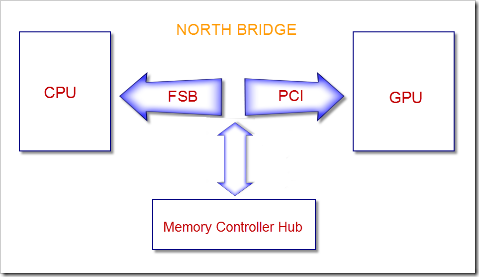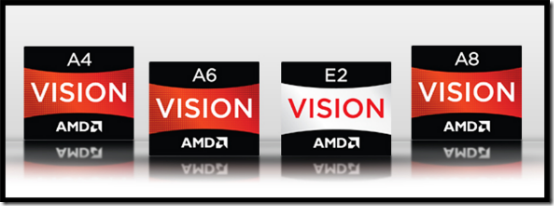Editor’s Note: The author wishes to remain anonymous.
The last time I went to buy a PC, I found myself at crossroads when it came to deciding what to choose: faster CPU or better GPU? I finally ended up asking my dad for more funds. 😛
In today’s age where you cannot expect parents to give you more funds, just so that you can get faster and better graphics, we have to make smarter choices. Thankfully if you are planning to buy a desktop in the next few months, AMD has come up with some options!
A CPU design-innovator helping out with my graphics needs? It is natural to be asking that question but before I tell you what AMD has done, let us go over what the current scenario is.
The Problem with Processors
A motherboard chipset has typically two main areas. North Bridge and South Bridge. North Bridge handles all the fast paced communication between the RAM, CPU and GPU. While the South Bridge handles slower communication between the USB ports, keyboards and other peripheral devices. The bus speeds may vary for different Bridges. Too complicated? Let me simplify it for you.
Assume that there are two rooms in an office called Northbridge. One of them is called the CPU and the other GPU. The front desk (known as Memory Controller Hub or for those of you with tech flair, Integrated Memory Controller) of the office deals out the work to the respective rooms. Also, Northbridge office is somewhat fancy.
It names the corridor between the front desk and the CPU as FSB (Technical Note: AMD has now moved over to a Hyper Transport technology) and that between front desk and GPU as PCI. The front door is in the middle of the central corridor as shown in the picture:

Normally, when information/work arrives at the front desk, the person there decides what sort of work it is. If it’s a graphic work, i.e., it involves complex float (decimal range upto 10^+/-32) computation, he sends the work to GPU.
GPU people are good at that sort of work.
If anything else is encountered, it is then sent over to CPU. CPU is expected to process a task as fast as possible whereas a GPU must be capable of processing a maximum number of tasks on a large-scale of data. This means GPU has lots of people working inside it . CPU has fewer, but faster workers.
It takes a lot of power to run both the rooms as resources are duplicated (like air-conditioning, lights etc). Also, as there is only one door from the front desk to the either of the rooms, a bottleneck for work flow is created.
There is GPU-CPU communication too, which keeps increasing the overall time required to complete the job.
The Solution by AMD
Now consider a new office designed by AMD. Let’s say AMD was a consultancy hired to build more efficient office by the guys at Northbridge. They want to increase the overall performance of the office by reducing the average time required to complete each job and make efficient use of resources.
You don’t really have to be an Einstein to figure out this solution. Combine both the offices, make the CPU office bigger and add the GPU people inside it.
That’s exactly what the folks at AMD have done. They combined their CPU design and processing skills along with the amazing pixel crunching skills of ATI (AMD has acquired ATI in 2006). This way the new AMD Fusion Accelerated Processing Unit (APU) was born!
‘What does this mean to me?’ Well, remember how the GPU had lots of people and it was draining resources like usage of electricity? Power that is very valuable when you have a laptop or are running a computer on a UPS. Power, which when saved, keeps the world’s environment cleaner and your electricity bills low.
Since the front desk doesn’t have to go through the trouble of separating out the work to GPU or CPU, we can expect faster working speed and lesser average execution time. This means, faster speeds out of lesser resources! 🙂
AMD Fusion (APU) Features
- The innovative AMD Fusion Accelerated Processing Unit (APU) combines the powerful AMD processor technology and discrete-class, DirectX® 11–capable graphics combined on a single chip.
- It’s the perfect combination of beauty and brawn – delivering smooth HD video, powerful multitasking and energy efficiency.
- AMD’s new APU features up to 4 x86 cores combined with up to 400 Radeon™ graphics cores in a single microchip.
And that is no joke in terms of computing. Infact, in their ‘Vision’ campaign they claim 10+ hrs of computer usage and 94% better performance in gaming.
Head on over to the AMD website and check out their cool videos describing how the combined awesomeness of AMD processors and ATI gfx can make gaming, video/photo/music editing breeze lightening and at nearly half the power usage. For the tech savvy this guy has the 411 on AMD Fusion. Also, for those with decent tech know-how check out the white paper (its brown!) that AMD has released.
Link: AMD Vision

